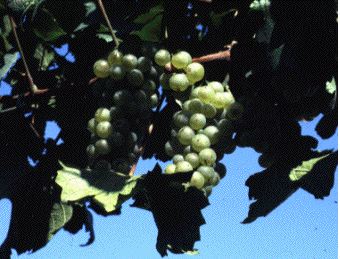
Grapevine
yellows is a disease caused by a
complex of phytoplasmas (formerly
called a mycoplasma-like organism, MLO). Symptoms include necrotic
shoot
tips, tendrils and inflorescences,
downward-curling
leaves
and vine death. It has affected primarily
Chardonnay
and Riesling vines in the Piedmont of Virginia (Wolf
et al. 1994). It is similar to another yellows-type disease in Europe,
Flavescence dorée (FD) (However, GY spreads within a vineyard
more
slowly than FD). The latter disease is know to be transmitted by
various
leafhoppers and planthoppers (Maixner 1994). A major vector in Europe
of
FD that has been introduced in North America is the leafhopper
Scaphoideus
titanus Ball, the most common
deltacephaline leafhopper associated
with grapevines in New York (Maixner et al. 1993). Beanland
(2003) reported on recent
research on GY in northern Virginia. Potential
vectors include the leafhoppers Agallia
constricta, Exitianus
exitiosus, Macrosteles quadrilineatus and Endria
inimica.
Transmission by these species is being evaluated, as well as the role
of
Vitis
riparia and other wild host
plants.